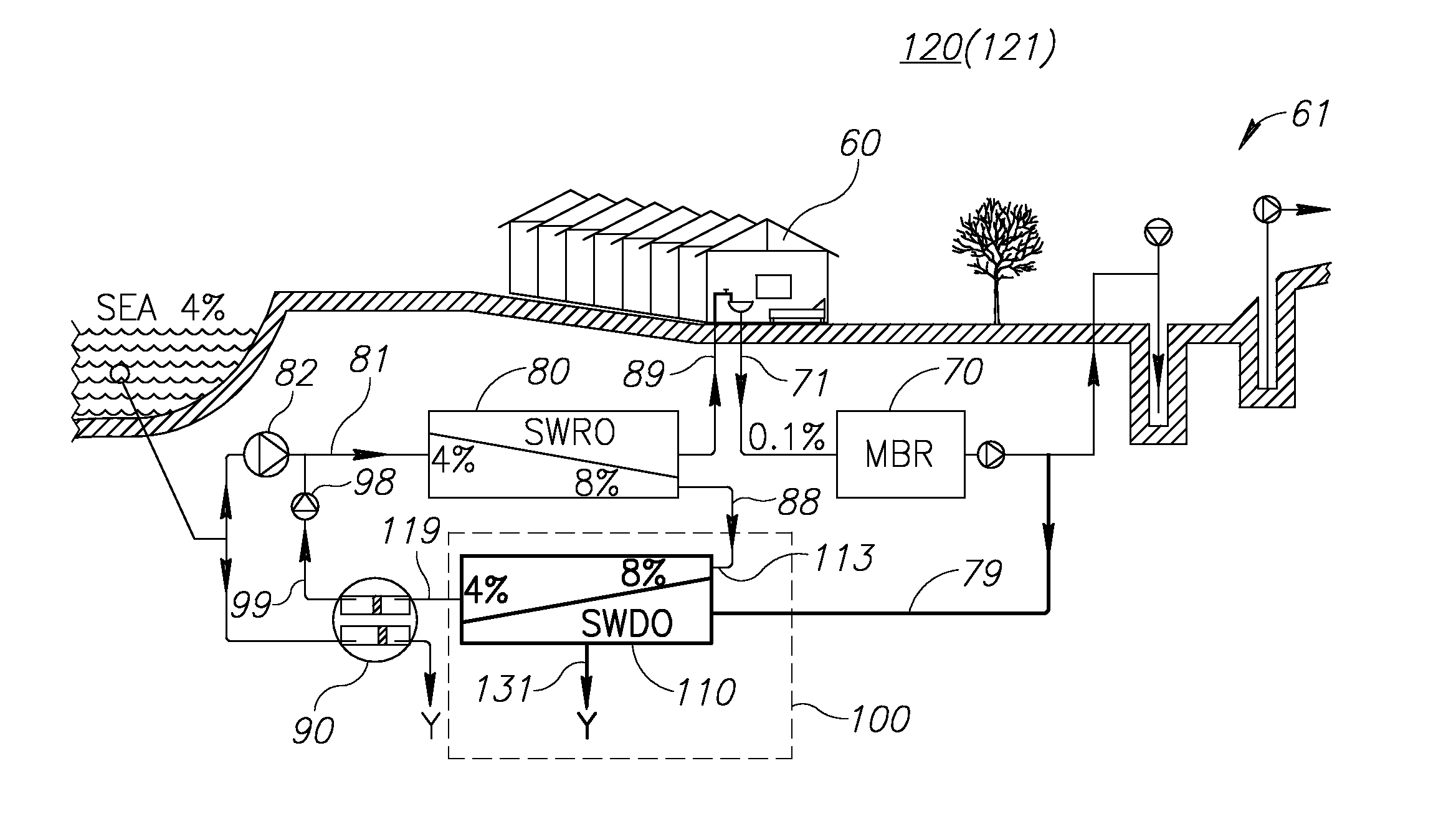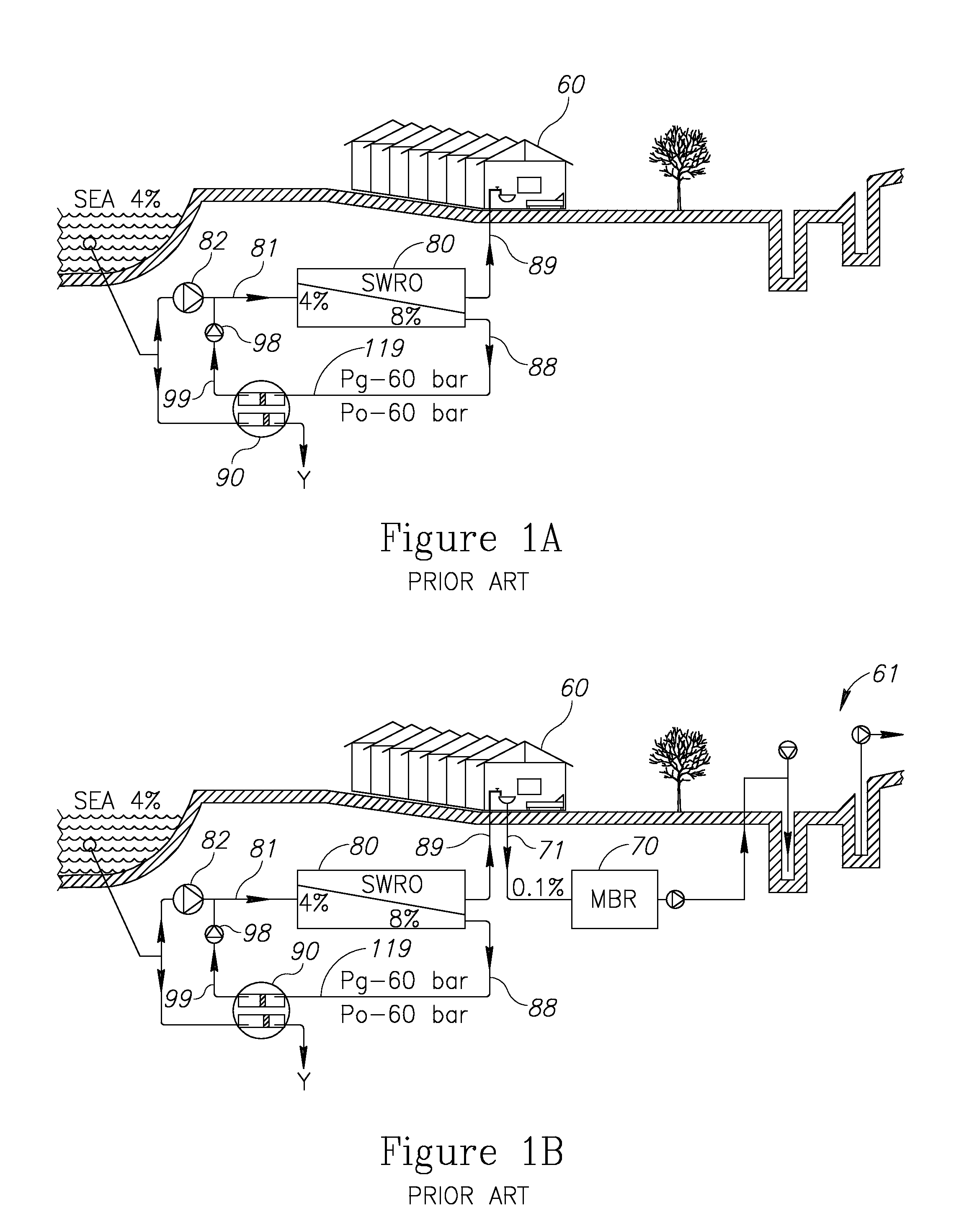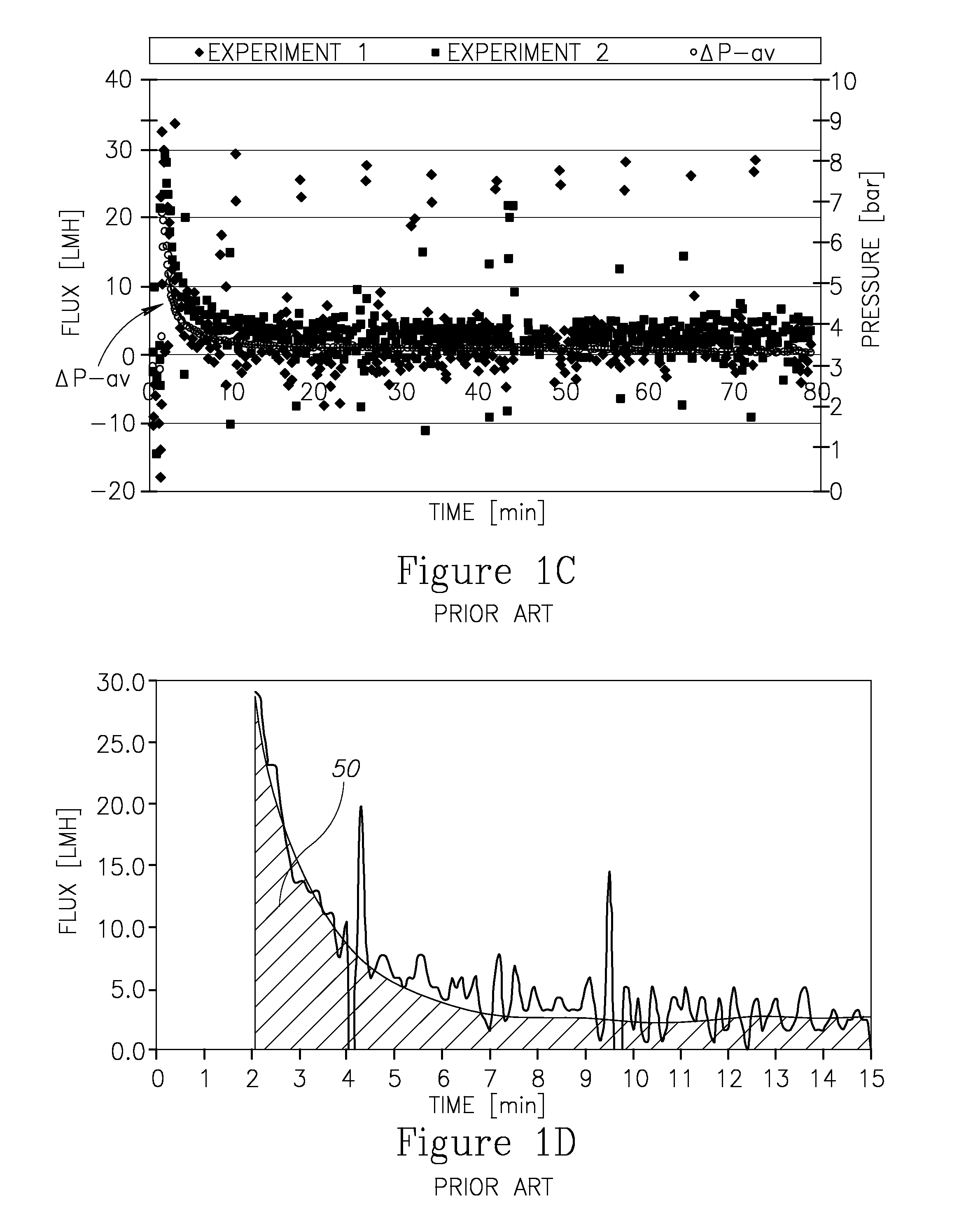Reciprocal enhancement of reverse osmosis and forward osmosis
- Summary
- Abstract
- Description
- Claims
- Application Information
AI Technical Summary
Problems solved by technology
Method used
Image
Examples
example 1
[0048]The following example (illustrated in FIG. 2B) is presented for the following values of pressures and mass balance of flow entering and exiting membrane element 110 (the FO drawing side of membrane 115 which receives the brine is denoted by 117, the FO feed side is denoted by 118): Bfi—Flow brine in (e.g. 1 m3 / sec), Bfo—Flow brine out (e.g. 1.9 m3 / sec), WWi—Flow waste water in (e.g. 1 m3 / sec), WWo—Flow waste water out (e.g. 0.1 m3 / sec), PObi—Osmotic pressure brine in (e.g. 60 bar), PObo—Osmotic pressure brine out (e.g. 30 bar), POwi—Osmotic pressure waste water in (e.g. 0.3 bar), POwo—Osmotic pressure waste water out (e.g. 0.6 bar), PGbi—Gauge pressure brine in (e.g. 60 bar), PGbo—Gauge pressure brine out (e.g. 59.9 bar), PGwi—Gauge pressure waste water in (e.g. 33 bar), PGwo—Gauge pressure waste water out (e.g. 32 bar), the net driving pressure (NDF) that provide penetration of waste water into the stream of brine is calculated as follows: PGb-PGw-POb+POw=59.5−32.4−31.6+0.45=...
example 2
[0059]The process is exemplified using Pressure Retarded Osmosis (PRO) as one of many FO applications. FIG. 3A illustrates the desalination system at a FO state (121) of recovering osmotic pressure of the brine generated by RO unit 80, FIG. 3B illustrates the pressures on membrane 115 (as rejection layer) in this state (121), with the CP that is built (across membrane 115, in volume 127 as external CP and in volume 128 as internal CP, e.g. in support layer 116) by the end of the FO stage. FIG. 4A illustrates the desalination system at a RO, or washing state (122) of removing the CP in order to rehabilitate the osmotic gradient across membrane 115, such as to efficiently re-apply the FO process. FIG. 4B illustrates the pressures on membrane 115 in this state (122), without the CP, anticipating the inception of the next FO stage. Table 2 summarizes the pressures at the beginning of the FO stage (121), at the end of the FO stage (121), and at the beginning of the flushing phase (122). ...
PUM
| Property | Measurement | Unit |
|---|---|---|
| Pressure | aaaaa | aaaaa |
| Salinity | aaaaa | aaaaa |
| Concentration | aaaaa | aaaaa |
Abstract
Description
Claims
Application Information
 Login to View More
Login to View More - R&D
- Intellectual Property
- Life Sciences
- Materials
- Tech Scout
- Unparalleled Data Quality
- Higher Quality Content
- 60% Fewer Hallucinations
Browse by: Latest US Patents, China's latest patents, Technical Efficacy Thesaurus, Application Domain, Technology Topic, Popular Technical Reports.
© 2025 PatSnap. All rights reserved.Legal|Privacy policy|Modern Slavery Act Transparency Statement|Sitemap|About US| Contact US: help@patsnap.com



